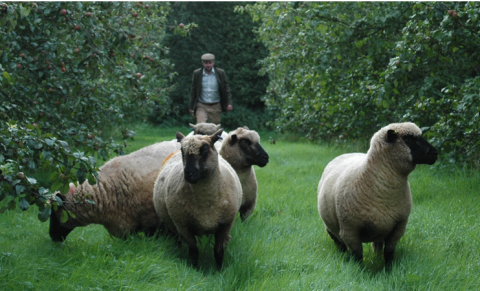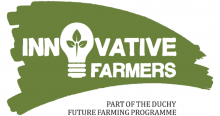At a recent Innovative Farmers event a farmer asked the question: which tree species should I choose to provide the best nutritional supplements for my dairy cows? Ideally, there would be a simple table of tree species with their nutritional benefits listed next to them, and this would answer her question. But nothing in farming is simple! And over-simplifying the topic of nutrition is unhelpful and misleading, as Lindsay Whistance of Organic Research Centre (ORC) has explained.
How to feed tree forage to livestock seems to be more important than what species to feed them. Using Lindsay’s advice and knowledge, this article looks at why farmers should choose a multi-species mix rather than opting for one species over another, and what management issues need to be considered if trees are to play a useful role in livestock diet.
Summary for farmers and land managers :
- A variety of species provides a variety of benefits; don’t reduce your tree choice to one species.
- Species choice should reflect the needs and conditions of the farm as a whole rather than just the nutritional benefits. For example, in coastal conditions, sycamore will tolerate both salt and wind. Nutrition and anti-nutrition levels vary in plants throughout the season and depending on age and whether fresh or dried, the same is true with minerals, vitamins, and tannins.
- Management systems are key: If trees are used for livestock browsing, ensure the quantity and access are sufficient for all livestock and take tree recovery time into consideration. Make sure that trees that represent a risk of poisoning are managed carefully if present in the landscape.
- If planning to preserve tree fodder, carefully consider your harvesting and storage methods.
The species planted as part of the silvopasture field lab in Devon were chosen to represent:
- The expected species that would form the dominant natural woody flora for the North Devon area on relatively heavy clays (pedunculate oak, downy birch, aspen, alder, hazel, holly, and willow)
- Some were chosen for specific browsing properties (willow (selenium source), wych elm (used to be cut for forage) and Scots pine (medicinal)
How are trees fed to livestock?
As with grasses, tree forage can be fed to livestock as fresh browse or as a preserved fodder, either dried as tree hay, or made into silage. Historically, providing tree browse or tree fodder was very normal on farms, though it largely died out with the introduction of winter root crops. Today these practices are still used but are not mainstream. If farmers are considering using trees for livestock feed then they need to fully consider how the trees will fit into their farm management system.
Things to consider if you want to make good use of tree browse as a livestock feed:
- Is there enough browsable material for all the animals?
- Do they all have sufficient access to trees? (For larger herds this may be in the form of a long hedgerow or strip of trees – see our article on silvopasture design for more information)
- Is the browse at an appropriate height for the whole herd?
- Are the trees old/resilient enough to withstand browsing?
- Are the trees protected enough to ensure that the animals are not going to kill them or cause damage which takes time and effort to repair? (Some farmers simply throw lopped branches into the field).
- Is sufficient recovery time factored into the rotation so trees have time to grow back?
See more and see nutritional tables on the IF website




